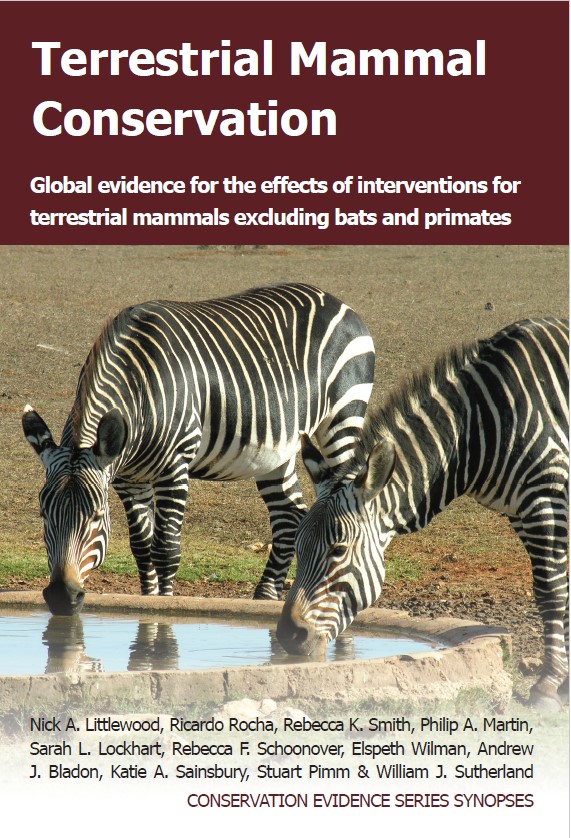Restore or create grassland
-
Overall effectiveness category Likely to be beneficial
-
Number of studies: 3
View assessment score
Hide assessment score
How is the evidence assessed?
-
Effectiveness
40% -
Certainty
40% -
Harms
0%
Study locations
Supporting evidence from individual studies
A controlled, before-and-after study in 2000–2002 on a scrubland in southwest Portugal (Ferreira & Alves 2009) found that sowing pasture grasses into areas cleared of scrub did not increase densities of European rabbits Oryctolagus cuniculus. Rabbit pellet density after sowing of seeds (1.6–3.6 pellets/m2) did not differ significantly from that before sowing (1.5 pellets/m2). Trends in rabbit density were similar on an area not sown with seed (after: 1.1–1.3 pellets/m2; before: 0.5 pellets/m2). Two 300-ha study areas were located at least 3 km apart. In February 2001, scrub was cleared in 5-m-wide strips at both sites. Cleared strips at one site were then sown with two pasture grasses, rye Secale cereale and slender oat Avena barbat, and with subterranean clover Trifolium subterraneum. At the second site, no seeds were sown. Rabbit pellets were counted monthly, at fixed points along transects, from May 2001 to October 2002.
Study and other actions testedA replicated, site comparison study in 2005–2008 of a pine-juniper forest in Colorado, USA (Bergman et al. 2014) found that seeding with grassland species as part of a suite of actions including mechanical disturbance and herbicide application (referred to as advanced management) increased overwinter survival of mule deer Odocoileus hemionus fawns. Average overwinter survival was highest under advanced management (77%), intermediate under mechanical disturbance and reseeding but without follow-up actions (69%) and lowest with no habitat management (67%). Mechanical management, commencing in 1998–2004, involved removing and mulching trees to create open areas. These were reseeded with grasses and other flowering plants. Follow-up actions in advanced management plots, two to four years later, involved controlling weeds with herbicide and further seeding with deer browse species. Management actions were not carried out individually, so their relative effects cannot be determined. Fawns were radio-collared on eight study plots; two advanced management plots, four mechanical management plots and two unmanaged plots. Survival was assessed by monitoring fawns from capture (1 December to 1 January) until 15 June, in winters of 2004–2005 to 2007–2008, three to six years after mechanical treatments.
Study and other actions testedA replicated, site comparison study in 2011–2012 in a marsh and grassland site in Hungary (Mérő et al. 2015) found that grassland restored on former cropland hosted a similar species richness and abundance of small mammals compared to native grassland. The average species richness in restored grassland plots (0–5.9/survey) did not differ significantly from native grassland (0–6.0/survey). Likewise, the average total small mammal catch did not differ between restored grassland (0–40/survey) and native grassland (0–48/survey). However, among restored plots, June-mown restorations had more individuals (1–40/survey) than did August-mown (0–17/survey) or sheep-grazed (0–9/survey) restorations. Restoration was carried out in 2005–2008 on former cropland. Within a 4,073-ha site, eight restored grassland plots and two natural grassland plots were studied. Plots covered 16–300 ha. Small mammals were surveyed using 36 Sherman live traps/site, over five nights and days, in spring and autumn of 2011 and 2012.
Study and other actions tested
Where has this evidence come from?
List of journals searched by synopsis
All the journals searched for all synopses
This Action forms part of the Action Synopsis:
Terrestrial Mammal Conservation
Terrestrial Mammal Conservation - Published 2020
Terrestrial Mammal Conservation





)_2023.JPG)














